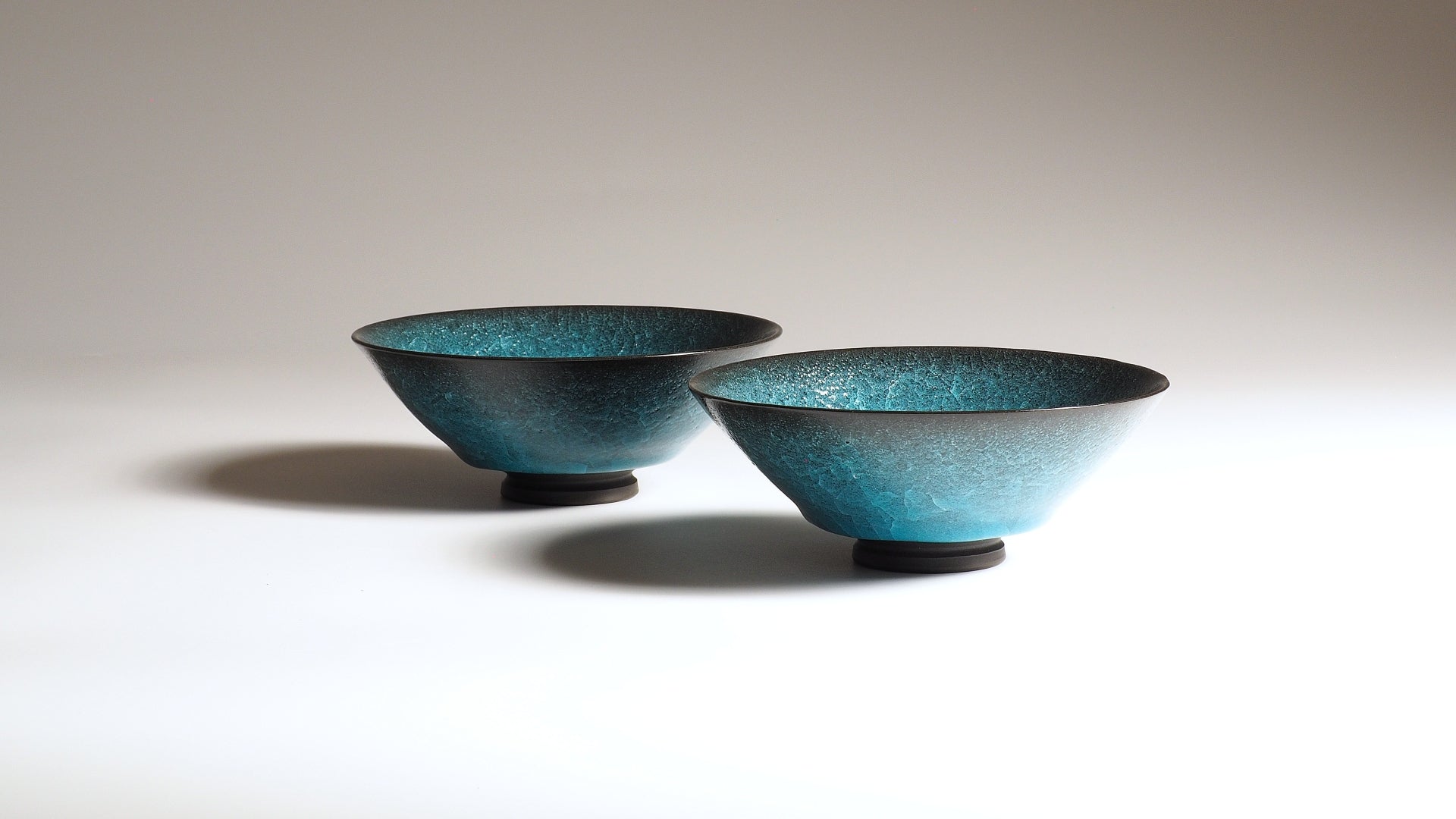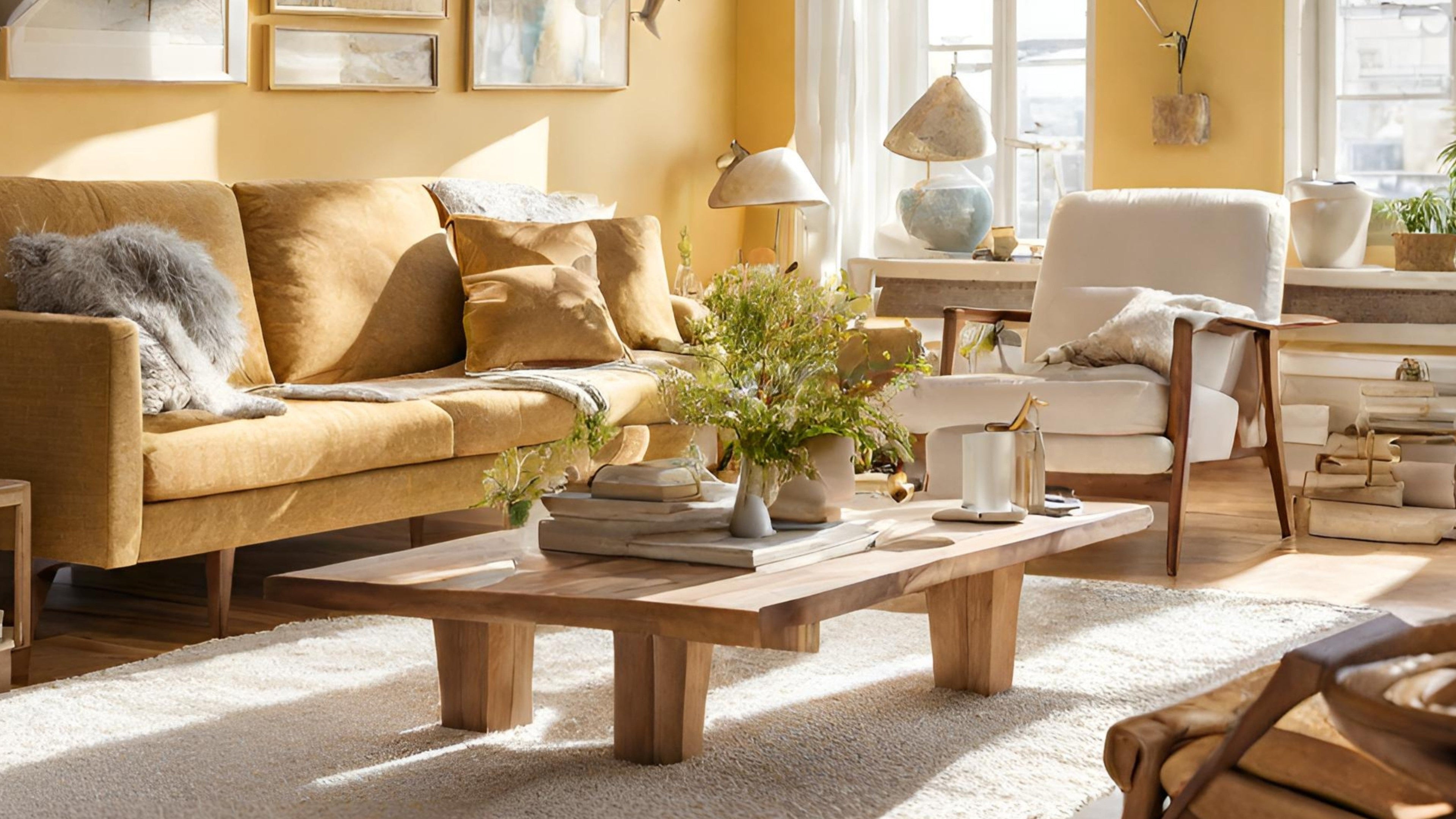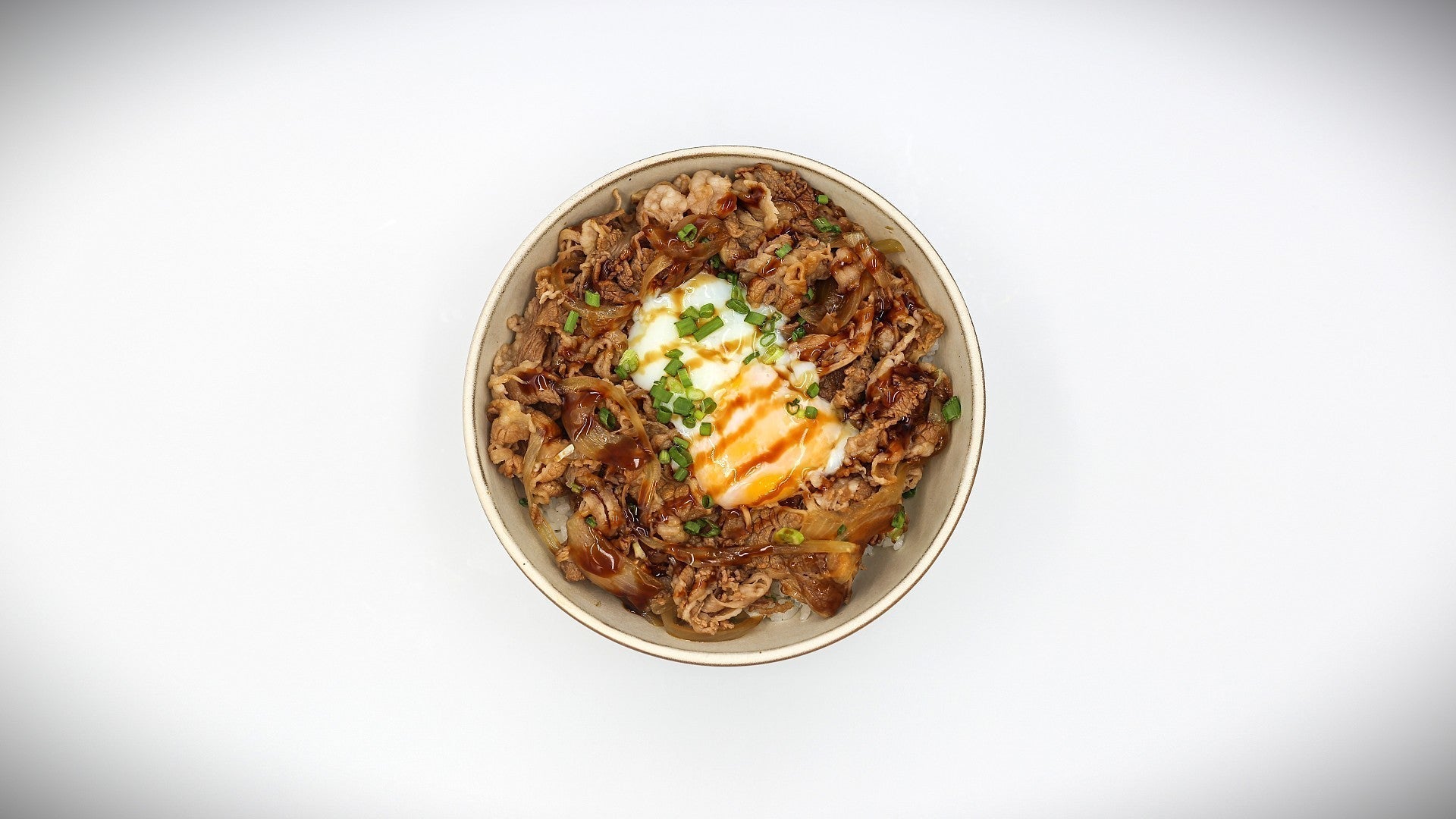
Japanese Bowl Types: A Complete Guide to Tradition & Use
A Japanese bowl is a traditional vessel used in Japan for serving rice, soup, noodles, and side dishes. Japanese bowl types are divided into two main groups: wan (椀), small bowls designed to be lifted in the hand, and hachi (鉢), larger bowls that stay on the table.
Each type has its own role in Japanese dining, from the personal rice chawan to the deep ramen-bachi.
In this article, we’ll explore these two families of bowls and, along the way, touch on cultural traditions and the artistry behind them.
Ready to find your favorite?
Wan (椀): The Bowls You Lift in Your Hand
Wan bowls are about closeness.
They’re small to hold and light to balance in one hand, usually crafted from wood (often lacquered) or ceramic. Holding one brings the aroma and warmth nearer to you, which is part of the pleasure.
Why lift them at all? Well...to honor the food, to really taste it and pay attention, and, in a practical sense, to make rice easier to eat with chopsticks and soup simpler to sip straight from the bowl.
All the following subcategories, from rice bowls to tea bowls, belong to this wan family, each one showing how form follows function in daily life.
Japanese Rice Bowls: Everyday Companions
Japanese rice bowls come mainly in two types, each serving a slightly different role at the table:

A Japanese rice bowl, meshiwan (飯椀), with its distinctive conical silhouette.
Meshiwan
The meshiwan (飯椀), also called gohan chawan (ご飯茶碗), is often shaped into a conical silhouette that gently flares outward from a narrow foot, making it easy to hold in one hand. It is usually made of ceramic and does not have a lid.
The meshiwan holds special importance in Japanese culture, as it is the main vessel used to eat rice, the staple food at the heart of almost every Japanese meal.
Each family member typically has their own rice bowl, chosen according to size, color, or design that reflects personal taste.
Technically, meshiwan belong to the broader chawan (茶碗) family of bowls, a term that originally meant tea bowl (“cha” means tea) but now also refers to rice bowls.
Hanki
The hanki (飯器) is a lidded rice vessel traditionally used to present freshly cooked rice, including seasonal blends such as corn rice. Lifting the lid releases a gentle curl of steam, heightening anticipation for the flavors inside.
While practical, the hanki also carries a sense of ceremony, which is why it remains a familiar element in kaiseki cuisine.

Local hanki (飯器) containing corn rice, served during a traditional kaiseki lunch in Shiga Prefecture.
Japanese Soup Bowls: For Broth and Simmered Dishes
Soup plays a central role in Japanese meals, from the comforting daily miso to elegant clear broths. Different kinds of soup call for specific vessels, each designed to highlight aroma, warmth, and appearance.
Shiru-wan
Shiru-wan (汁椀) is the general term for soup bowls.
Lightweight and often made from lacquered wood, they’re practical for everyday use and comfortable to hold while sipping.
Wood is chosen because it provides natural thermal insulation, keeping the bowl pleasant to touch. The opening is wide, making it easy to pick ingredients with chopsticks, whether tofu cubes, wakame, or daikon slices floating in the soup.

A Japanese soup bowl, Shiru-wan (汁椀), handcrafted from elm wood and left natural, unlacquered.
Miso-shiru-wan
The miso-shiru-wan (味噌汁椀) is a traditional bowl made for miso soup.
Typically lacquered, it feels pleasantly warm to the touch and is sized for sipping.
Natural wood options are also available, and some versions include a lid to help retain heat until the first itadakimasu.
Suimono-wan
Clear broths are presented in a suimono-wan (吸い物椀), usually 10–12 cm in diameter and often with a fitted lid to preserve aroma.
These bowls are used in kaiseki cuisine, where the vessel frames delicate garnishes like yuzu peel or a shaped carrot, emphasizing refinement and presentation as much as the broth itself.
Nimono-wan
The nimono-wan (煮物椀) is a lidded bowl for simmered dishes, frequently featured in kaiseki cuisine.
Typically crafted from ceramic or lacquered wood, it enhances both presentation and atmosphere, making it as much aesthetic as functional.
Hira-wan
The hira-wan (平椀) is a large, shallow bowl used for boiled, steamed, grilled, or fried foods. It is usually larger than a standard soup bowl, often comes with a fitted lid, and is commonly made from lacquered wood.
Beyond daily use, it also appears in Buddhist rituals as a vessel for offerings.
Japanese Tea Bowls: Ceremony and Everyday
Tea bowls are central to both ritual and daily life. The most important is the matcha bowl.
Matcha-wan
Few vessels carry as much quiet significance as the matcha bowl.
Commonly referred to as matchawan (抹茶碗) in Japan, this bowl is wide enough for whisking, thick enough to hold warmth, and often intentionally irregular. It embodies wabi-sabi, the appreciation of imperfection.
Drinking from a matcha bowl isn’t just about tea, it reflects mindfulness and the tradition of slowing down.
For everyday tea, most people use yunomi (湯呑), straight-sided cups that, while not bowls, hold their own cultural importance.

Matcha Bowl matchawan (抹茶碗) from Raku Ichinyū (1640–1696 A.D.). The MET Museum.
Special Purposes: Unique Bowls
Some bowls serve very specific roles at the table, adding variety and depth to dining traditions.
Chawanmushi
Chawanmushi (茶碗蒸し) is both the name of the savory custard and the vessel itself, sometimes called mushiwan (蒸し椀).
The small lidded bowl keeps heat and fragrance close, while the dish feels like silk on the tongue.
Lift the lid and a gentle cloud of dashi rises, carrying the scent of kombu and bonito. Inside, treasures like shrimp, ginkgo nut, and shiitake reveal themselves spoon by spoon.

Chawanmushi bowl (茶碗蒸し) made of black unglazed pottery.
Oryoki
Ōryōki (応量器) are traditional Zen bowl sets designed to nest compactly, each smaller bowl fitting neatly inside the larger one.
Originally used by Buddhist monks for mindful eating, their minimalist form and waste-conscious design now inspire modern tableware rooted in simplicity and intention.
Hachi (鉢): The Bowls That Stay on the Table
If wan are intimate, hachi are abundant.
These bowls sit firmly on the table, larger and heavier, ready for noodles, rice dishes with toppings, and shared plates. They anchor the meal.
Have you ever leaned over a big bowl of ramen with both hands? That’s hachi at work.
Noodle Bowls: The Heart of Comfort Dishes
Few dishes provide comfort quite like a bowl of noodles.
Known collectively as menbachi (麺鉢), these vessels are thoughtfully designed to suit different noodle varieties. They range from the deep bowls ideal for ramen to the compact dipping cups used for soba.
Ramen Bowl
The Japanese ramen bowl (ラーメン鉢, ramen-bachi) is deep and wide, designed to balance broth, noodles, and toppings. With a shape that spreads upwards, its thick walls hold heat, the lip curves for slurping, and the foot ring keeps the bowl steady when chasing the last noodle.
Ramen bowls come in different sizes, but are generally wider than 20 cm and mainly made of ceramic.

Top view of a Ramen bowl. Image by 5amramen
Udon Bowl
Udon’s thick noodles are traditionally served in udon-bachi (うどん鉢), bowls that are typically broader to provide room for toppings such as tempura or a poached egg.
Their wide opening makes it easy to enjoy both hearty garnishes and a rich broth. Characterized by a simple, functional design, the udon-bachi is deeper than a ramen bowl and features a rounded, open shape that balances practicality with understated elegance.
Soba Bowl
An honorable mention goes to the soba-choko (蕎麦猪口).
Although often placed within the menbachi category, they may be more accurately associated with the “wan” family of lifting vessels, since their use involves raising the cup to the mouth when enjoying soba.
The soba-choko serves as a small bowl or cup for dipping sauce when enjoying soba (buckwheat noodles). It is typically held in one hand while the noodles are gracefully slurped.
When soba is served cold, the noodles are presented on a bamboo tray accompanied by this compact dipping cup. The ritual is simple yet refined: dip, lift, and savor the earthy character of buckwheat.
Donburi: A Meal in One Bowl
The donburi bowl (丼ぶり鉢) is a traditional Japanese bowl designed to bring rice and toppings together into a single, satisfying meal.
Classic variations include pork cutlet simmered with egg (カツ丼, katsudon), beef with onion (牛丼, gyūdon), or prawn tempura drizzled with a sweet-savory sauce (天丼, tendon).
Unlike plates, which separate elements across the table, the donburi concentrates flavor and presentation in one vessel, making it both practical and emblematic of Japanese dining culture.
Most donburi bowls are crafted in ceramic, yet wooden donburi bowls also exist, offering a warmer touch and a slightly different dining experience.

Wooden donburi bowl (丼ぶり鉢) made from Katsura wood (Japanese Judas tree)
Small to Large Bowls: Bachi for Sharing
These bowls range from tiny cups to generous family-size vessels, each adding rhythm to the table.
Kobachi
Kobachi (小鉢) are small bowls for side dishes that brighten the table. A spinach goma-ae here, a few pickled daikon there. They make a meal feel lively.
Chubachi
Chubachi (中鉢) are medium bowls for shared dishes like braised vegetables or seaweed salad.
Obachi
Obachi (大鉢) are large Japanese serving bowls used for family-style dishes, from simmered kabocha to chilled somen in summer, or simply for a refreshing salad.
Hira-bachi
Part bowl, part plate, the hira-bachi (平鉢) spreads food outward instead of upward. Slices of sashimi, simmered vegetables, or a salad can be displayed beautifully.
Tonsui and Mukōzuke
A tonsui (呑水) is a small yet deep Japanese bowl with a handle on one side. Its shape makes it easy to hold hot ingredients (such as when serving food from a hot pot) and to use for dipping soups.
Mukōzuke (向付) are formal bowls for sashimi or appetizers, shaped to frame the dish with elegance in the kaiseki cuisine setting.
What Makes a Japanese Bowl Matter?
Why so much attention to shape, material, and size?
Well...maybe because the vessel can change the aroma, heat, and how you interact with the dish.
A lacquered miso bowl feels warm without burning, a heavy ramen bowl keeps broth hot to the end, while a rice bowl with a taller foot ring stays cool where your fingers rest. See? Every shape and form has a purpose, rooted in centuries of Japanese tableware tradition.
There’s also lineage. Lacquerware from Wajima, porcelain from Arita and Imari, earthy pottery from Shigaraki, refined ceramic bowls from Kyoto; each region brings its clay, glazes, and traditions.
When you use a Japanese bowl, you’re not only eating, you’re continuing a conversation between artisans and the table.
In the end, every Japanese bowl carries both function and heritage, turning each meal into part of a living tradition.
Japanese Bowls Beyond Japan: Integration in Global Cuisine
Japanese bowls aren’t limited to traditional Japanese meals.
In Western kitchens, a deep ramen bowl often doubles for pasta or hearty soups, while the versatile donburi bowl has become a favorite for grain bowls and fresh salads.
In the United States, those same ramen bowls might hold chili or even mac and cheese, prized for how well they keep dishes warm.
In Australia, cafés use donburi bowls for colorful poke bowls or breakfast grains, while across Europe, wide hira-bachi carry Mediterranean salads, roasted vegetables, or creamy risottos.
Even in Vietnam, pho sometimes arrives at the table in a Japanese ramen bowl, and in parts of the Middle East, chubachi serve mezze spreads like hummus or tabbouleh.
Choosing Japanese Bowls That Fit Your Life
From the rice bowl you cradle in the morning to the ramen bowl that anchors a quiet Sunday meal, Japanese bowls are more than tableware, they’re companions in daily life, shaped by comfort, tradition, and balance.
Once you discover the many types and their purposes, the table itself begins to change. You start pairing dishes and forms with ease, and every meal feels more considered, more whole.
If you’re building a set, think about your habits:
Eat soup often? Choose a shiru-wan or a deep ramen-bachi.
Love shared meals? Add an obachi and some kobachi.
Ready to explore? Try a hira-bachi for plating.
However you choose, the right bowl will bring both purpose and harmony to your table.
FAQ
Curious about the many forms and uses of Japanese bowls?
This section gathers the most common questions readers ask, from cultural origins to practical differences, so you can understand not just what these bowls are but how they fit into daily life and even global kitchens.
What are the main types of Japanese bowls?
Japanese bowls fall into two categories:
- Wan (椀), meant to be held in the hand for rice or soup
- Hachi (鉢), which stay on the table for noodles, donburi, or shared dishes.
This division is central to Japanese dining, shaping how each meal feels and how food is enjoyed at the table.
What is a Matcha bowl?
A matcha bowl, or matchawan (抹茶碗), is a traditional Japanese tea bowl specifically designed for preparing powdered green tea.
Its broad shape accommodates whisking, while its thickness helps retain warmth.
Often asymmetrical, the bowl reflects the wabi-sabi aesthetic, emphasizing natural beauty and imperfection.
Beyond its functional role, the matchawan symbolizes mindfulness and presence within the Japanese tea ceremony, making it one of the most culturally significant forms of Japanese ceramics.
What is a Chawanmushi bowl?
The chawanmushi (茶碗蒸し) refers both to the savory custard and the lidded bowl, also called mushiwan.
The vessel traps heat and aroma, allowing the silky egg custard inside to reveal layers of shrimp, shiitake, or ginkgo nut. It’s practical yet deeply tied to Japanese culinary elegance.
What is a Donburi bowl?
The donburi bowl (丼ぶり鉢) is a traditional Japanese bowl specifically designed for serving rice topped with various ingredients, allowing flavors to be concentrated in a single dish.
Popular varieties such as katsudon, gyūdon, and tendon showcase its emphasis on both abundance and convenience.
Can Japanese bowls be used in Western kitchens?
In North America, ramen bowls are often repurposed for hearty stews or creamy pasta dishes.
In Europe, hira-bachi are well suited for paella or couscous.
In Australia, donburi bowls frequently serve fresh grain-based salads, while in South America, larger bowls such as obachi or hirabachi are used for ceviche or shared tapas.
These variations highlight how seamlessly Japanese bowls adapt to global cuisines.
What are the main materials used for Japanese bowls?
Japanese bowls are crafted from ceramics, porcelain, lacquered wood, or natural wood.
Ceramic ramen and donburi bowls retain heat well, while lacquered soup bowls stay light and pleasant to touch.
The choice of material balances functionality, cultural tradition, and sensory experience.
What is the difference between a Ramen bowl and an Udon bowl?
A ramen bowl (ramen-bachi) is deep and wide, made to hold hot broth, noodles, and toppings.
An udon bowl (udon-bachi) is broader with a wide opening, giving room for thicker noodles and chunky toppings like tempura. Both are ceramic, but their shapes reflect the dish they serve.
Which Japanese bowls should I start with at home?
There are really no strict rules when it comes to choosing bowls, as personal taste always comes first. Still, a few guidelines can help you build a versatile set.
Begin with the basics: one rice bowl, one miso soup bowl, and two multipurpose hachi such as a ramen-bachi and a donburi.
As your collection grows, add kobachi for side dishes and a hira-bachi for presentation.
With this selection, you’ll be ready for everyday meals while appreciating the traditions tied to each vessel.



